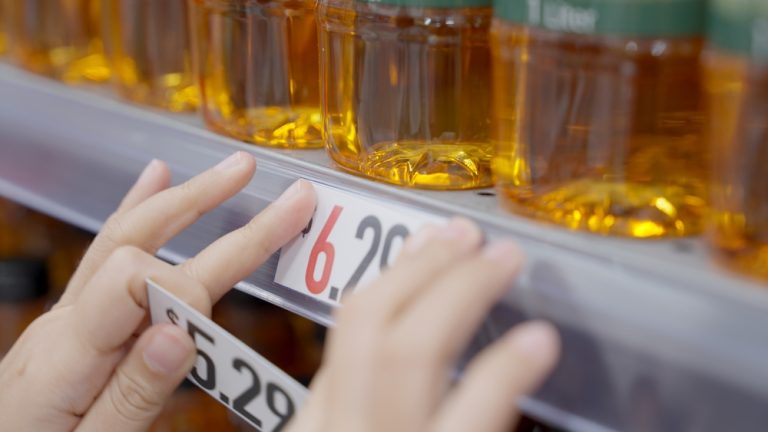Critical minerals explorer iTech Minerals holds a dominant landholding on South Australia’s Eyre Peninsula with exposure to two different commodities at two projects, but it’s the graphite operation that is shaping up to be the portfolio’s golden child.
The Campoona graphite project, first developed by Archer Materials (ASX:AXE) in 2012, sits on ~2,100km2 of land on South Australia’s Eyre Peninsula.
While AXE was granted a mining lease over the asset, and proved that it could produce a 96–97% total graphitic carbon (TGC) concentrate, the company never achieved the required 99.95% TGC grade needed to turn the graphite ore into a flake concentrate for lithium-ion batteries.
iTech Minerals (ASX:ITM) listed on the ASX in 2021 and grabbed the opportunity to develop the deposits at Campoona as a source of battery anode material to meet growing demand.
The aspiring graphite producer focused on a low-cost beneficiation process through simple flotation to produce the minimum 94% TGC concentrate from the Campoona graphite ore, which it achieved in 2022.
It then went on to produce a battery grade purified spherical graphite concentrate at better than 99.95% TGC, meeting all the required industry standards for lithium-ion batteries.
Over the last 18 months, ITM has been working on expanding its low-cost resource base through drilling and has discovered significant graphite mineralisation in the process at a new prospect called Lacroma, where a maiden resource is due in June.
This will add to the existing resource of 8.55Mt at 9% TGC across the Campoona, Campoona Central and Wilclo South project areas, and point the way for the company to build a green graphite mining operation using the abundant renewable energy available in South Australia where over 10,400MW of wind and solar is planned, along with the Hydrogen Utility Gateway project which aims to include up to 1.5GW of electrolysis capacity.
While much of its focus rests on Campoona, ITM also owns the large-scale Caralue Bluff clay-hosted REE project, about 15km away.
Stockhead sat down with managing director Michael Schwarz to get a rundown on the latest activities at both projects.
Firstly, what is it about the geology of the Eyre Peninsula region that makes it so prospective for mining and development?
“The region is host to a series of rocks which are between 3.2 and 1.8 billion years old, rocks from an ancient sea floor captured a significant number of ancient algae (organic material/carbon) in the sea water which was then heated up and cooked to form graphite,” Schwarz says.
“This process partially melted the rocks and drove off the rare earth elements to concentrate in granite.
“Later weathering of these granites produced the Caralue Bluff REE mineralisation – it is the long geological history of these processes that make this area so prospective.”
What characteristics does the mineralisation at Campoona feature, making it suited for a low-cost operation?
“Mineralisation occurs from surface with a shallow dip of ~300 east, implying a low strip ratio and early delivery of product to market,” he says.
“The mineralisation is highly weathered and dominantly clay hosted with potential for free dig in large sections of the deposit adding to the potential for low mining costs.
“The groundwater table is also over 60-80m deep which alleviates problems with groundwater management, acid mine drainage and sulphide affecting flotation properties.”
Earlier this year you tripled the strike of mineralisation at the Lacroma Central prospect, and you’re due to unleash a resource at the prospect any day now, how big do you think this project is going to get?
“We have been drilling for the last 12-18 months on the Lacroma prospect and have established mineralisation over a distance of over 1.7km,” Schwarz says.
“We will have to wait for the independent geologists to calculate the maiden mineral resource for Lacroma but we are hoping it will be significantly larger than our current resource base of 8.5Mt at 9% TGC.”
Renascor’s 16.8Mt at 8.2% TGC for 1.4Mt contained graphite Siviour graphite asset has been granted major project status and sits just to the south of you, how confident are you that Campoona will follow in its footsteps?
“To compete in the graphite market for lithium-ion batteries you need to be able to consistently produce a high-quality product over a significant period at a low-cost,” he says.
“iTech are competing against synthetic graphite out of China which currently has a low-cost base but this could change quickly if electricity or oil prices increase as these are critical ingredients for synthetic graphite.
“Supply issues out of Chine are also an issue with export controls recently put in place by the Chinese government,” Schwarz says.
“We have targeted our exploration and development to meet the emerging markets in the USA and Europe which require a high-quality, environmentally sound product with consistent supply.
“I believe our approach will give us many synergies with projects like Renascor’s Siviour graphite asset – the more graphite producers we have in Australia, and particularly the Eyre Peninsula, the more potential we have to become a regional hub of graphite production that can securely and consistently supply emerging markets.”
There’s a second airborne electromagnetic anomaly to the north of Lacroma Central that you reckon is twice its size. How’s exploration and drilling tracking there and what are you hoping to find?
“The graphite exploration to the north of Lacroma has shown that mineralisation continues a long way north,” he says.
“We have not drilled enough holes yet to determine if there could be another deposit in this region, but the potential certainly exists.
“It is still early days for Lacroma North and we have a lot more drill targets that still need to be tested but we hope to update the market on this region of exploration once all drill results have been received.”
What will your next steps at Lacroma be once the resource has been announced?
“Prior to announcing the resource, we need to show that we can produce a low-cost high-quality graphite concentrate of at least 94% TGC at Lacroma,” Schwarz says.
“This is to meet the requirement of a reasonable likelihood of economic extraction in the JORC code.
“Once the resource is announced we would then like to show that we can further upgrade the 94% TGC concentrate to battery grade specifications of 99.95% TGC, which will require further metallurgical test work,” he says.
“Having achieved this we will continue to add resources that meet our criteria of low-cost production.
“We also have a sleeping giant at our Sugarloaf Graphite Project which has an exploration target of 158 – 264 Mt at 7 – 12% TGC, exploration is underway to determine if we can produce a commercial concentrate from this material.”
Moving across to your rare earth asset now, how close do you think you are there at cracking the metallurgical code?
“We have achieved recoveries of up to 88% of TREO from the Caralue Bluff clay hosted mineralisation and are able to retain 75% of the valuable elements in just 50% of the material by simple screening,” he says.
“This means we only have to process half of the material which brings down costs significantly.
“But the issue remains that the system doesn’t appear to be ionic and we need to use hydrochloric acid to leach out the rare earths and this brings along a lot of contaminants.
“Although the project has good potential, we’ve decided to focus on our graphite projects which have a proven path to an economic product.”
What was the reasoning behind the Reynolds Range acquisition given you’ve already got two large-scale, advanced critical minerals projects in your portfolio?
“Basically, it was an opportunity that was too good to pass up,” Schwarz says.
“We have a period of downtime for our exploration team while the resource at Lacroma is being calculated so we have put them to work on developing gold, copper, lithium and REE targets at Reynolds Range.
“So far, they have come up with very encouraging potential for both copper and gold at a time when both commodities are in high demand and nearing price records,” he says.
“iTech started life as a materials company for batteries and the electrification of the economy and the commodities at Reynolds Range fit nicely into this portfolio.”
At Stockhead we tell it like it is. While iTech Minerals are a Stockhead client, it did not sponsor this article.
The post Q+A: Why iTech Minerals’ Campoona project could be Australia’s next low-cost graphite operation appeared first on Stockhead.






















